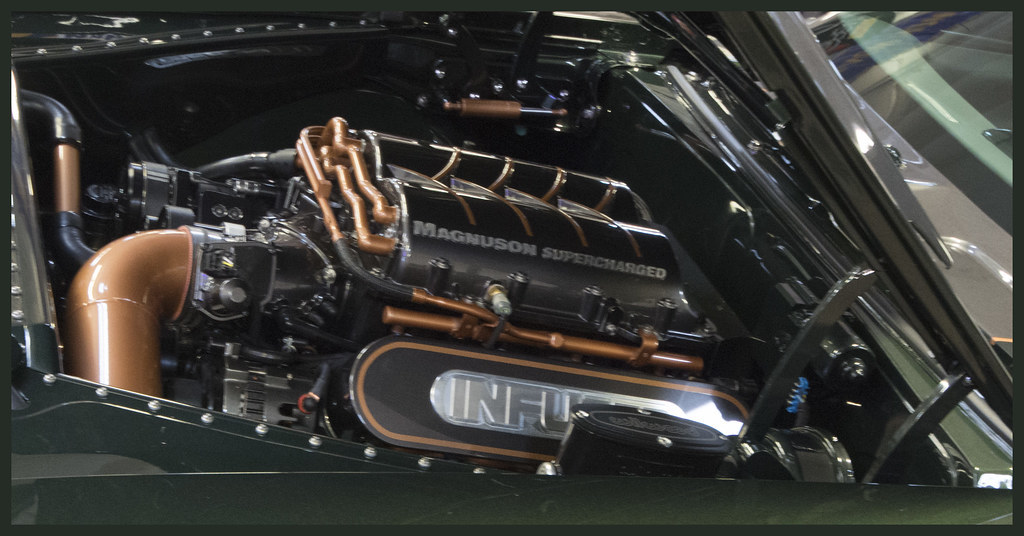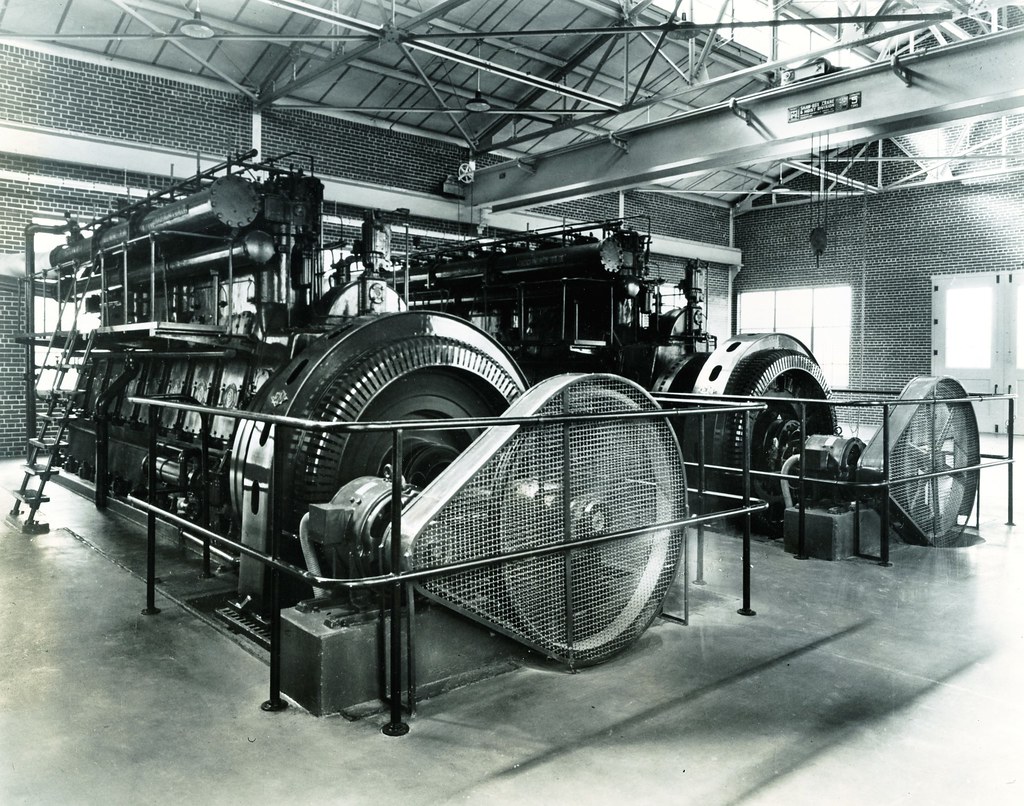
In the intricate world of automotive engineering, few powertrains command the same respect for sheer endurance as the diesel engine. While perhaps not as ubiquitous in American passenger cars as their gasoline counterparts, largely due to stringent emissions regulations and a nuanced consumer preference, diesel engines have undeniably forged a formidable reputation where it matters most: in the realm of heavy-duty performance and unwavering reliability. They are the silent giants, powering everything from commercial fleets to dedicated work trucks, relentlessly tackling the toughest jobs with an inherent efficiency and torque that gasoline engines often struggle to match.
The journey of diesel technology in the U.S. has been complex, even experiencing setbacks like the 2015 Volkswagen Dieselgate scandal, which, for a time, undeniably tarnished public perception. However, the core truth about diesel remains: these engines are engineered for an entirely different class of service. They excel in applications demanding immense pulling power and sustained operation over long distances, where their superior fuel economy, particularly in long-haul or work-based usage, translates directly into tangible benefits. The very design philosophy behind a diesel engine is steeped in durability, building in strengths that allow them to push the boundaries of conventional mileage expectations.
Crafting a definitive roster of the “most reliable” diesel engines is an endeavor rich in variables—owner maintenance habits, diverse climatic conditions, and varied applications all profoundly influence longevity. Yet, a select group of engines consistently emerges, celebrated for their exceptional long-term dependability, especially when paired with proactive and diligent care. This in-depth article will meticulously explore a handpicked collection of diesel titans, each renowned for their ability to not just meet, but dramatically exceed, the 400,000-mile mark, solidifying their status as true long-haul legends before they even contemplate retirement. We’re talking about engines that redefine what’s possible in terms of enduring performance, built for the long run.
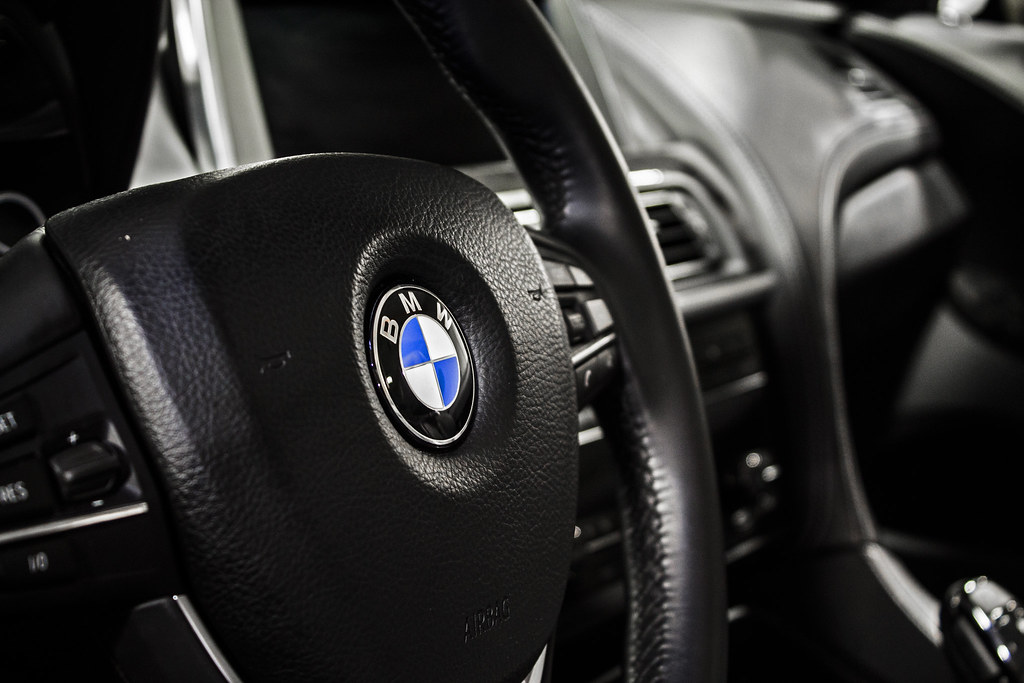
1. **BMW M57 3.0L I6: Performance Meets Longevity**The BMW M57 3.0L diesel engine represents a fascinating intersection of performance engineering and robust durability, a characteristic that propelled it into iconic status within models such as the 3, 5, and 7 Series, as well as the robust X5 SUV. This inline-six powerplant wasn’t merely about efficient cruising; it delivered a remarkably smooth, torquey experience that belied its diesel nature, all while being built on internals designed to withstand hundreds of thousands of miles of spirited driving. Its seamless integration into BMW’s luxury and performance ethos made it a standout.
At its heart, the M57 is revered for its inherently strong “hard parts,” the fundamental components like the engine block, crankshaft, and connecting rods that form the unbreakable core. This robust foundation is what allows the engine to rack up impressive mileage figures with confidence. However, to maintain its peak performance and longevity, vigilance over its emissions components is crucial. Items such as the Exhaust Gas Recirculation (EGR) valve, Diesel Particulate Filter (DPF), and various turbo seals are known to require periodic attention or replacement, a common reality for many modern, emissions-compliant diesel powerplants.
While the core engine is a fortress, owners should also be mindful of other potential wear items. Occasional crank damper failures or cooling system leaks have been reported, underlining the importance of a holistic maintenance approach. Yet, it’s imperative to understand that these are typically secondary concerns compared to the engine’s fundamental resilience. With a consistent schedule of routine care, which includes regular fluid changes and inspections, the M57’s primary mechanical components continue to deliver unwavering dependability.
Furthermore, the operational environment plays a significant role in the M57’s long-term health. Engines used for regular highway driving often experience fewer issues with emissions system buildup, as sustained operating temperatures help keep these components cleaner and functioning efficiently. This makes the M57 an ideal candidate for those who value BMW’s legendary driving dynamics alongside the tangible benefits of diesel longevity, offering a compelling blend of luxury, power, and enduring reliability for the discerning driver.
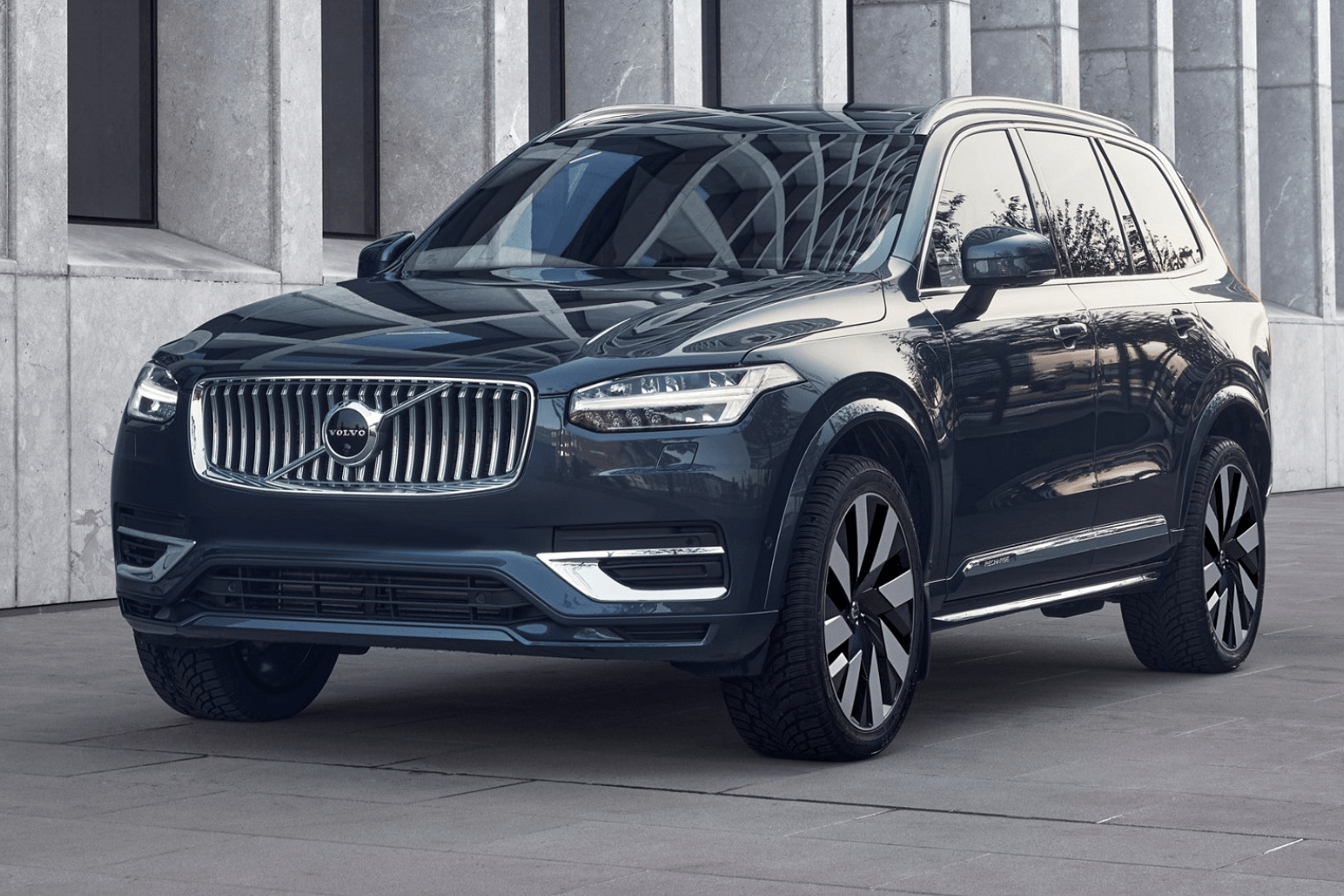
2. **Volvo D5 2.4L I5: Scandinavian Toughness**Embarking on our list of long-haul champions, the Volvo D5 2.4L I5 engine emerges as a testament to Scandinavian engineering excellence, marrying durability with a distinctive operational character. This inline-five diesel, ingeniously based on Volvo’s adaptable modular gasoline engine architecture, found its home in a variety of well-regarded vehicles, from the sporty S60 to the family-oriented XC90. Its robust construction, featuring a strong aluminum block fortified with durable iron liners, was a deliberate design choice to meticulously manage the high combustion pressures inherent in diesel operation, ensuring its long-term structural integrity.
The D5 engine swiftly earned accolades for its remarkably smooth power delivery and an abundance of accessible torque, attributes that contribute significantly to both comfortable cruising and confident pulling capabilities. It’s a powertrain that consistently defies conventional expectations, with countless examples effortlessly surpassing the 200,000-mile mark. More impressively, many D5s have demonstrated the potential for significantly higher mileage, a direct reflection of their inherent design strength when paired with a diligent and comprehensive maintenance regimen. This consistent performance underscores its reputation for being a resilient and dependable workhorse in a variety of driving conditions.
While the D5’s core components are undeniably tough, its long-term viability hinges on meticulous attention to a few critical areas. Owners should remain vigilant for potential failures in the engine cooling fan, an issue that can compromise thermal management and lead to overheating if neglected. Fuel line leaks are another known concern that requires prompt inspection and repair to prevent efficiency loss and potential hazards. However, the most severe—and preventable—issue revolves around timing belt failures. Neglecting scheduled timing belt replacements can result in catastrophic engine damage, underscoring the absolute necessity of adhering to manufacturer-recommended service intervals for this crucial component.
For those navigating the demanding roads of the U.S. market, the Volvo D5 has firmly established itself as one of Europe’s most resilient and practical diesel offerings. Its blend of a fundamentally strong mechanical foundation, smooth operational characteristics, and respectable fuel efficiency positions it as an excellent choice for drivers seeking longevity without sacrificing refinement. With proactive upkeep, including timely belt changes and comprehensive inspections, the D5 continues to prove that thoughtful engineering and diligent maintenance can keep a vehicle on the road, performing reliably, for hundreds of thousands of miles, truly embodying the spirit of Scandinavian toughness and endurance.
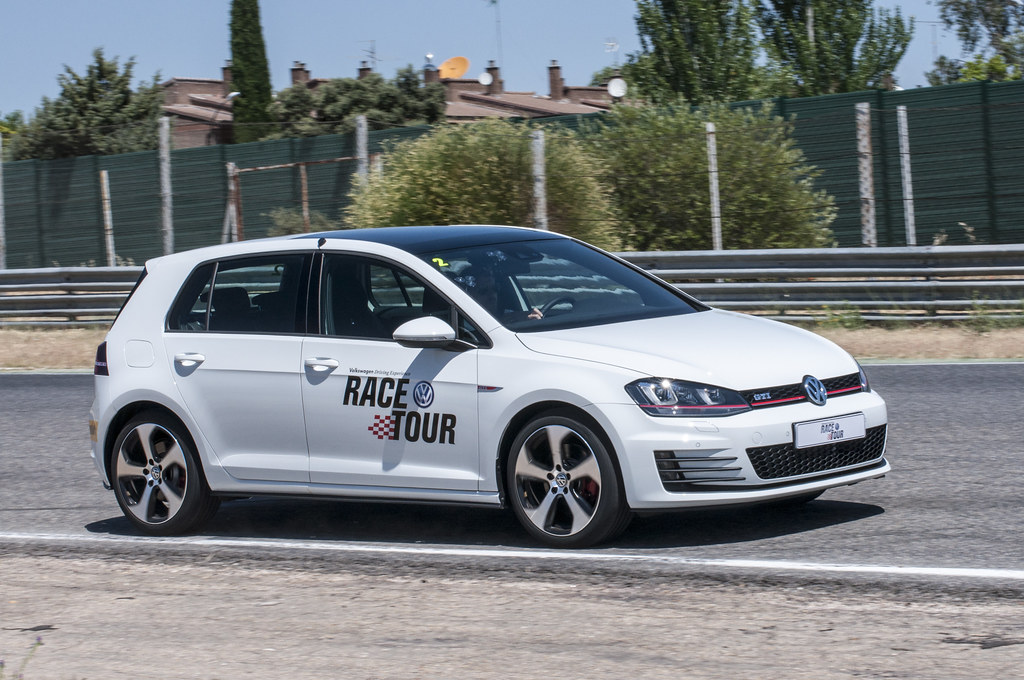
3. **VW Group EA827 TDI: Economical and Enduring**The VW Group’s EA827 TDI engines, particularly the 1.9L and 2.0L variants, have cemented their place as perhaps the most recognized and influential diesel units within the U.S. automotive market. Despite the indelible mark left by the “Dieselgate” controversy, the fundamental virtues of these engines – namely their exceptional fuel efficiency and rock-solid engineering – have continued to earn them a dedicated following. These pragmatic powerplants have successfully propelled millions of Volkswagen Golfs, Jettas, and various Audi models, becoming synonymous with practical, long-distance motoring for a generation of drivers.
Within this lineage, the 1.9L TDI version is especially lauded by enthusiasts and mechanics alike for its legendary longevity, a testament to its straightforward, robust design. It’s not uncommon to find these engines still running strong, easily surpassing the 300,000-mile mark, with many pushing towards half a million. While some might characterize its operational demeanor as “noisy,” this slight rawness is often overlooked in favor of its undeniable durability and remarkably frugal fuel consumption. The subsequent 2.0L variant brought a degree of added refinement and increased power output, building upon the dependable foundation of its 1.9L predecessor while still retaining the core engineering principles that made it so enduring.
Achieving maximum lifespan with these venerable TDIs requires diligent adherence to key maintenance protocols. Foremost among these is the absolutely critical regular timing belt replacement; skipping this service interval can lead to severe and irreparable engine damage. Furthermore, owners should maintain a keen awareness of potential issues with the Exhaust Gas Recirculation (EGR) system, which can become clogged and affect engine performance and emissions. The eventual wear and tear on dual-mass flywheels also warrants attention, as addressing these components proactively contributes significantly to the engine’s overall health and smooth operation, preventing more costly repairs down the line.
The enduring appeal of these Volkswagen Group TDIs lies precisely in their capability to deliver remarkably economical operation without ever sacrificing their fundamental reliability. They are truly built for the long haul, proving that with consistent maintenance, including timely replacement of wear items and strict adherence to service schedules, these engines are more than capable of effortlessly running well past the 300,000-mile benchmark. Their legacy is one of delivering substantial value, offering drivers a compelling combination of fuel efficiency, dependable performance, and impressive longevity, making them a wise choice for anyone prioritizing endurance.
Car Model Information: 2024 Volkswagen Golf R 2.0T DSG
Name: Volkswagen Golf
Caption: Volkswagen Golf Mk8
Manufacturer: Volkswagen
Production: 1974–present
Class: Compact car
Predecessor: Volkswagen Beetle
Successor: Volkswagen ID.3
Alt: grey car (hatchback)
Categories: 1980s cars, 1990s cars, 2000s cars, 2010s cars, 2020s cars
Summary: The Volkswagen Golf () is a compact car/small family car (C-segment) produced by the German automotive manufacturer Volkswagen since 1974, marketed worldwide across eight generations, in various body configurations and under various nameplates – including as the Volkswagen Rabbit in the United States and Canada (Mk1 and Mk5), and as the Volkswagen Caribe in Mexico (Mk1).
The original Golf Mk1 was a front-engined, front-wheel drive replacement for the air-cooled, rear-engined, rear-wheel drive Volkswagen Beetle. Historically, the Golf is Volkswagen’s best-selling model and is among the world’s top three best-selling models, with more than 35 million units sold as of 2019.
Initially, most Golfs were hatchbacks, with the three-door version being somewhat more popular than the five-door. Other variants include an estate (Variant, from 1993), convertible (Cabriolet or Cabrio, from 1979), and a Golf-based saloon called the Jetta, Vento (from 1992), or Bora (from 1999). The Golf covers economy to high-performance market segments.
The Golf has won awards, including the World Car of the Year in 2009, with the Mk6 and in 2013 with the Mk7. Along with the Renault Clio and the Vauxhall Astra, the Golf is one of only three cars to have won European Car of the Year twice, in 1992 and 2013. The Golf has made the annual Car and Driver 10Best list multiple times. The Mk7 won the Motor Trend Car of the Year award in 2015, and the Mk1 GTI also won the award in 1985. The Mk4 won for the best-selling car in Europe in 2001.
Get more information about: Volkswagen Golf
Buying a high-performing used car >>>
Brand: Volkswagen Model: Golf
Price: $42,963 Mileage: 10,238 mi.
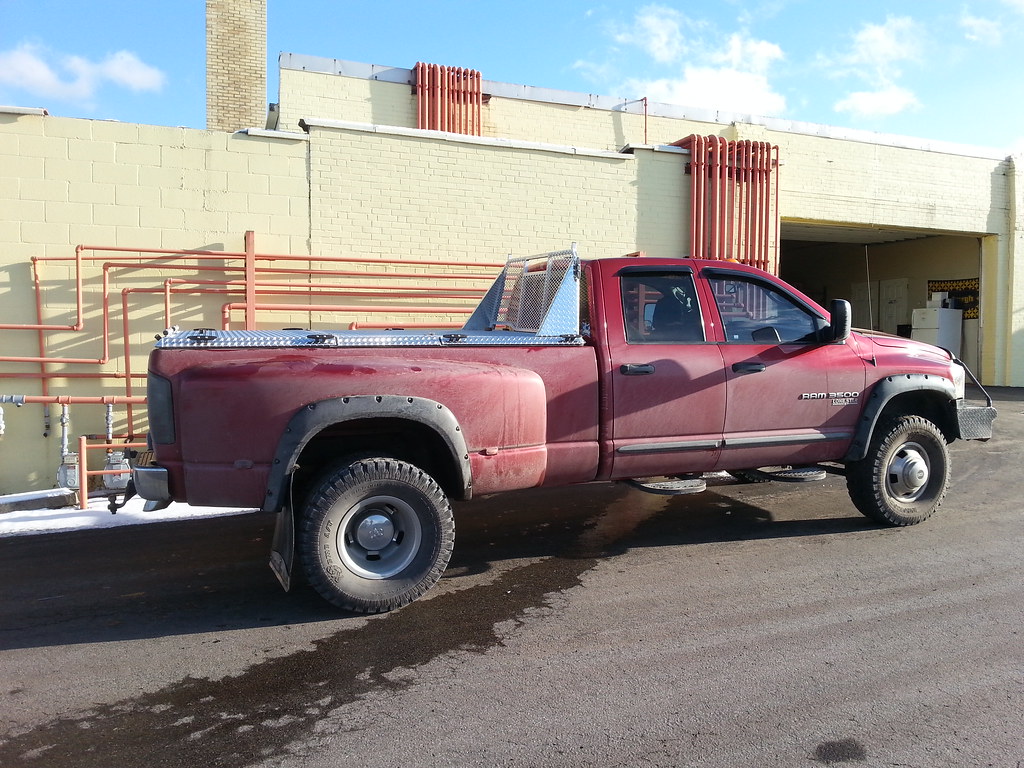
4. **Ram HD Cummins ISB: Legendary Inline Six**Few names resonate with such power and respect in the heavy-duty truck community as the Cummins ISB engine. Specifically, its 5.9L and 6.7L iterations have become synonymous with brute strength and an almost mythical reliability when paired with Ram HD trucks. This legendary inline-six powerplant is not just an engine; it’s a foundation upon which hundreds of thousands of miles of heavy hauling and demanding work have been built. Originating in the 1980s, the Cummins ISB quickly established itself as the benchmark for truck diesel durability, a reputation that has only grown stronger over the decades.
The evolution of the Cummins ISB has seen it adapt to changing performance and emissions demands, progressing from its initial robust mechanical injection systems to more refined 24-valve heads and advanced common-rail injection. These developments aimed to enhance power, improve fuel economy, and meet increasingly strict environmental standards, all while maintaining the core integrity that defines the Cummins name. While the fundamental engine architecture has always been extraordinarily robust, certain points of attention emerged in earlier models, such as the well-documented VP44 fuel pump failures or instances of turbo vane sticking, which were addressed through ongoing design improvements and aftermarket solutions.
Despite these known component-specific issues, the core engineering of the Cummins ISB engine remains almost unassailable, often described as “bulletproof” by those who rely on it daily. Its heavy-duty construction, characterized by massive bearings and robust castings, combined with the inherent balance and thermal stability of an inline-six configuration, contributes profoundly to its legendary longevity. With diligent servicing, particularly focusing on the maintenance and proper functioning of its emissions control gear in later 6.7L models, these engines are not just known to surpass 350,000 miles, but frequently double that figure, proving their mettle in the most arduous conditions.
The Cummins ISB is undeniably a premier choice for any application demanding serious heavy-duty capabilities. Its enduring popularity stems from a powerful trifecta of relative mechanical simplicity, immense endurance under load, and an unmatched ability to handle the rigors of commercial and extreme personal use. For truck owners who prioritize unwavering towing and hauling performance combined with a powertrain engineered to literally go the distance, the legendary Cummins ISB stands as an undisputed champion, embodying what it truly means for an engine to be a workhorse for the ages.
Car Model Information: 2020 RAM 1500 Laramie
Name: Ram Heavy Duty,(2500 / 3500 / 4500 / 5500)
Caption: Ram 3500 Limited with dual-rear-wheel configuration
Manufacturer: Ram Trucks
Aka: Ram HD
Production: 2019–present
ModelYears: 2019–present
Assembly: Saltillo
BodyStyle: Unbulleted list
Related: Ram 1500 (DT),Ram 1500 REV (Range-Extended),Ram 1500 REV (All-Electric),Ram 1500 TRX,Jeep Wagoneer (WS)
Engine: Unbulleted list
Transmission: Unbulleted list
Wheelbase: cvt
Length: cvt
Width: cvt
Height: cvt
Predecessor: Ram Pickup#Fourth generation (2009; DS/DJ/D2)
Categories: All articles needing additional references, Articles needing additional references from November 2023, Articles with short description, Latin NCAP pick-ups, Official website not in Wikidata
Summary: The Ram Heavy Duty (also known as the Ram HD) is the 5th generation of the Ram Pickup. Ram Pickup a series of heavy-duty pickup trucks produced by the Ram Trucks division of Stellantis. Slotted above the Ram 1500, the Heavy Duty trucks range from the Ram 2500 to the Ram 5500. The Ram 2500 and Ram 3500 are offered as pickup trucks, while the Ram 3500 through Ram 5500 are offered as chassis cabs.
Introduced in January 2019 at the North American International Auto Show in Detroit, Michigan, the current Ram Heavy Duty trucks are based on the Ram 1500 (DT). Ram Heavy-Duty models are produced at Saltillo Truck Assembly in Saltillo, Mexico.
Get more information about: Ram Heavy Duty (fifth generation)
Buying a high-performing used car >>>
Brand: Ram Model: HD
Price: $32,990 Mileage: 106,793 mi.
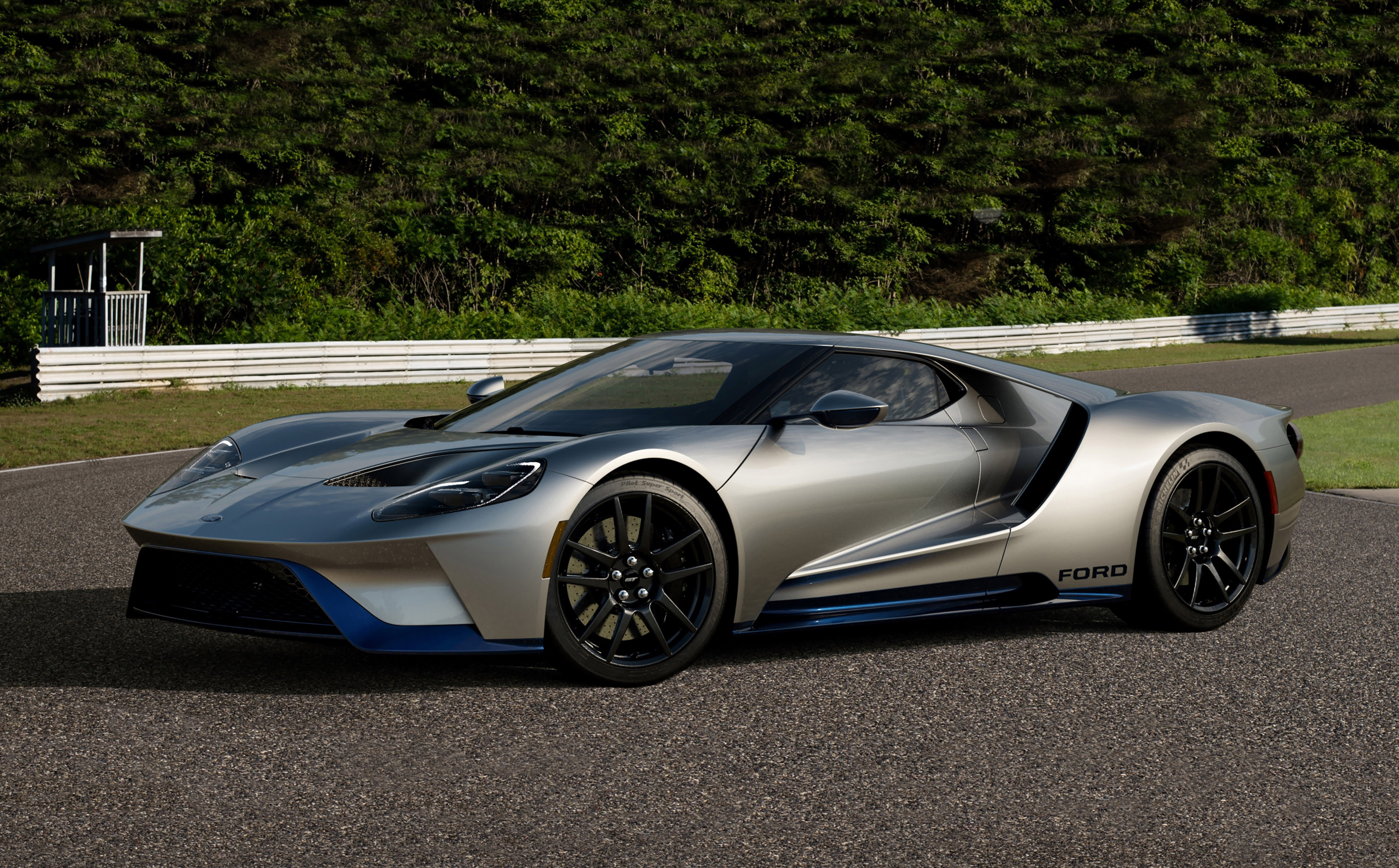
5. **Ford 6.7L Power Stroke V8: Modern Muscle**Ford’s 6.7L Power Stroke engine, an engineering marvel developed entirely in-house and first unleashed in 2011, marked a significant paradigm shift for the Blue Oval in the competitive diesel truck segment. This V8 powerhouse was purpose-built to propel Ford’s formidable F-250 and F-350 Super Duty trucks, quickly ascending to a dominant position by virtue of its staggering torque output, which in its latest iterations, can exceed an incredible 1,200 lb-ft. This kind of power firmly establishes it as a modern muscle legend, capable of tackling virtually any task with confidence and authority.
As is often the case with sophisticated, newly designed engines, the early production years of the 6.7L Power Stroke did present some initial challenges. Notable among these were reported issues with failing ceramic ball-bearing turbos and vulnerabilities associated with the Bosch CP4.2 fuel pumps. However, Ford demonstrated a proactive and commendable commitment to refinement, swiftly addressing these concerns through a series of significant engineering revisions and updates, particularly around the 2015 model year. These improvements were instrumental in dramatically enhancing the engine’s overall reliability and long-term durability, transforming it into the robust unit it is today.
The results of these concerted efforts are clearly evident: later models of the 6.7L Power Stroke have proven to be exceptionally robust and reliable. Key enhancements included stronger head gaskets and significantly improved Exhaust Gas Recirculation (EGR) systems, which collectively contribute to its enhanced resilience. This engine truly thrives on a meticulous and unwavering maintenance schedule. Regular, high-quality oil changes are non-negotiable, as are diligent cooling system checks and adherence to all recommended service intervals. These proactive steps are absolutely vital to safeguarding its long-term health, ensuring that the sophisticated components continue to operate at their peak.
When treated to this consistent level of care, the Ford 6.7L Power Stroke V8 is not merely capable, but confidently expected, to cross the impressive 400,000-mile threshold, and often considerably more, before major overhauls are even a consideration. This remarkable longevity, coupled with its immense power and refined operation, solidifies its position as an ideal choice for a diverse range of power-intensive applications. Whether deployed in demanding commercial fleets, for heavy-duty towing by avid enthusiasts, or simply as a supremely capable daily driver for those who demand the best, the 6.7L Power Stroke, especially in its refined post-2015 iterations, stands as a crowning achievement in modern diesel engineering.

6. **Toyota 1HD-FTE 4.2L I6: Built for Endurance**Shifting our focus to a globally revered powerhouse, the Toyota 1HD-FTE engine, a formidable straight-six turbodiesel, stands as a beacon of reliability and ruggedness. While not a common sight in the mainstream U.S. market, largely due to its primary deployment in iconic Land Cruisers and Hilux models overseas, imported versions have cultivated an ardent cult following. This engine is designed with a singular purpose: to deliver unwavering performance and exceptional longevity, even under the most demanding and often extreme operational conditions imaginable, a testament to Toyota’s engineering philosophy for endurance.
What truly sets the 1HD-FTE apart is its extraordinary capability to routinely achieve and often surpass the half-million-mile mark. Its reputation is not merely anecdotal; it is built on countless real-world examples enduring vast distances across unforgiving landscapes. The core mechanicals of this engine are inherently robust, built to withstand continuous heavy loads and challenging environments. However, even legends require care, and for the 1HD-FTE, key maintenance tasks include meticulous timing belt replacements and regular cleaning of the EGR system, crucial for maintaining optimal performance and preventing buildup.
Furthermore, Toyota advises specific attention to valve clearance checks every 40,000 miles, a proactive measure that underscores the engine’s precision engineering. The inherent simplicity of its mechanical fuel system is a significant contributor to its ‘bulletproof’ reputation, minimizing complex electronics that can be prone to failure in less robust designs. This blend of mechanical resilience and manageable maintenance makes it a favorite among off-road enthusiasts and expedition communities who demand unflinching durability and abundant low-end torque for navigating rugged terrain.
The 1HD-FTE is a vivid embodiment of an engine ‘built for endurance,’ prioritizing reliability and practical performance over sheer output figures. Its design philosophy ensures that it remains a top choice for those who value an engine that will faithfully perform, mile after arduous mile, in situations where failure is simply not an option. It’s a true workhorse, proving that thoughtful, robust engineering can yield decades of dependable service, cementing its place among the most enduring diesels ever produced.
Car Model Information: 2023 Honda Civic EX
Name: Toyota Land Cruiser
Caption: 2021 Toyota Land Cruiser ZX (VJA300, Colombia)
Manufacturer: Toyota
Production: 1951–present
Class: unbulleted list
Layout: Front-engine, four-wheel-drive
Categories: 1960s cars, 1970s cars, 1980s cars, 1990s cars, 2000s cars
Summary: The Toyota Land Cruiser (Japanese: トヨタ・ランドクルーザー, Hepburn: Toyota Rando-Kurūzā), also sometimes spelt as LandCruiser, is a series of four-wheel drive vehicles produced by the Japanese automobile manufacturer Toyota. It is Toyota’s longest running series of models. As of 2019, the sales of the Land Cruiser totalled more than 10 million units worldwide.
Production of the first generation of the Land Cruiser began in 1951. The Land Cruiser has been produced in convertible, hardtop, station wagon and cab chassis body styles. The Land Cruiser’s reliability and longevity have led to huge popularity, especially in Australia, where it is the best-selling body-on-frame, four-wheel drive vehicle. Toyota also extensively tests the Land Cruiser in the Australian outback – considered to be one of the toughest operating environments in both temperature and terrain. In Japan, the Land Cruiser was once exclusive to Toyota Japanese dealerships called Toyota Store.
Since 1990, the smaller variation of the Land Cruiser has been marketed as the Land Cruiser Prado. Described as a ‘light-duty’ version of the Land Cruiser by Toyota, it features a different design compared to the full-size model and, up until 2023, it remains the only comfort-oriented Land Cruiser available with a short-wheelbase 3-door version.
As of 2023, the full-size Land Cruiser was available in many markets. Exceptions include the United States (since 2021 where the smaller Land Cruiser Prado has been sold under the Land Cruiser name since 2024), Canada (since 1996), Malaysia (which receives the Lexus LX instead), Hong Kong, Macau, South Korea, Brazil, and most of Europe. In Europe, the only countries where the full-size Land Cruiser is officially sold are Gibraltar, Moldova, Russia, Belarus, and Ukraine. The Land Cruiser is hugely popular in the Middle East, Russia, Australia, India, Bangladesh, Pakistan, New Caledonia, and Africa. It is used by farmers, the construction industry, non-governmental and humanitarian organizations, the United Nations, national armies (often the pickup version), and irregular armed groups who turn them into “technicals” by mounting machine guns in the rear. In August 2019, cumulative global sales of the Land Cruiser family surpassed 10 million units.
Get more information about: Toyota Land Cruiser
Buying a high-performing used car >>>
Brand: Toyota Model: Land Cruiser
Price: $23,541 Mileage: 56,979 mi.
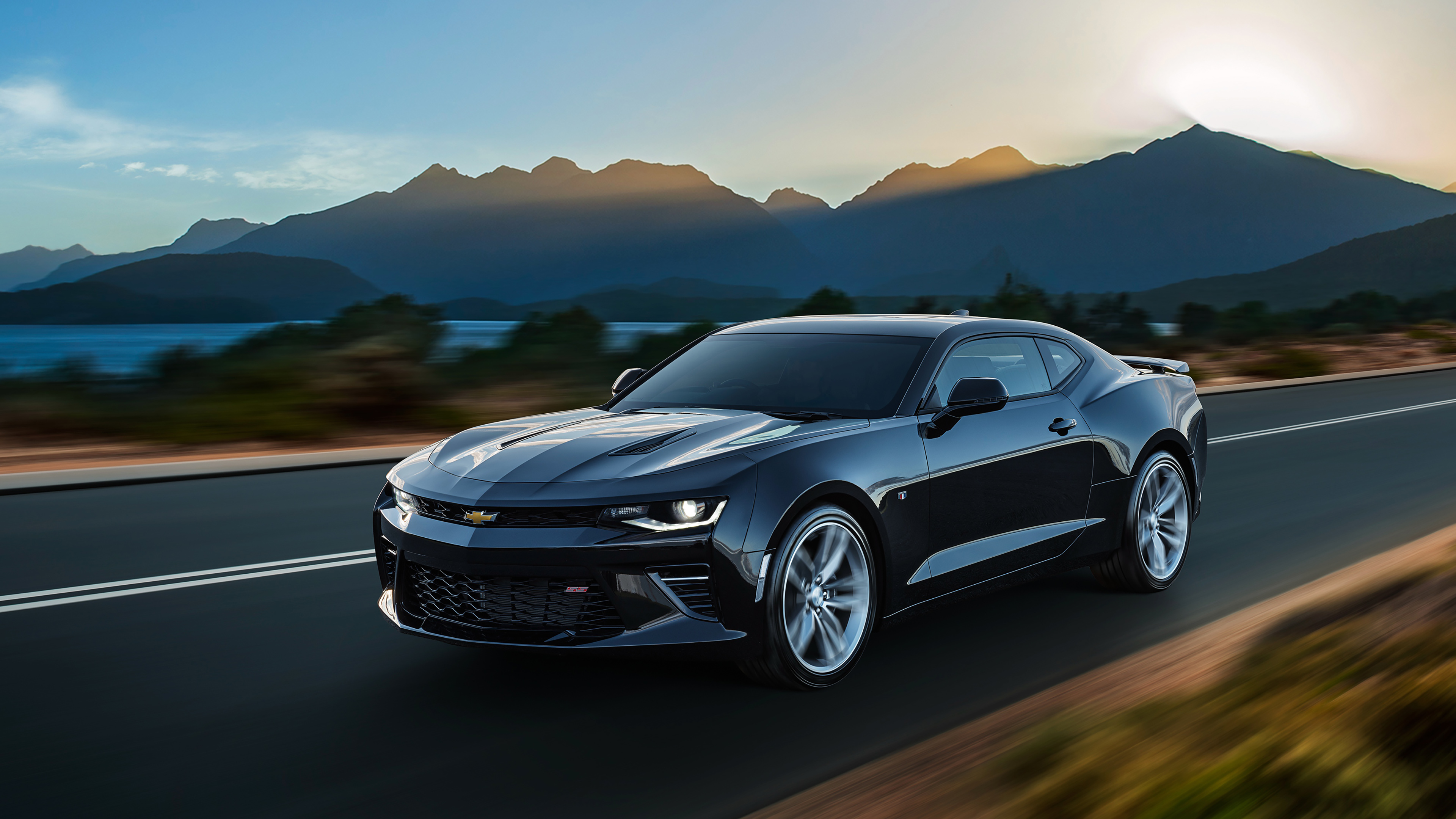
7. **Chevrolet Duramax LB7/LBZ V8: GM’s Diesel Workhorse**General Motors’ definitive entry into the competitive realm of modern diesel power came in the form of the Chevrolet Duramax 6.6L engines, specifically the LB7 and later the LBZ. Developed in a strategic partnership with Isuzu, these V8 powerplants were destined for Silverado and Sierra HD trucks, swiftly establishing themselves as formidable workhorses. The initial LB7, introduced with common-rail injection and aluminum heads, revolutionized GM’s heavy-duty offerings, providing a compelling blend of power, refinement, and fuel efficiency that rivaled the best in the segment.
While the early LB7 models did encounter some well-documented issues, notably with fuel injectors and fuel filter housings, GM and Isuzu demonstrated a commitment to continuous improvement. These initial challenges were systematically addressed and largely resolved in subsequent iterations, particularly with the evolution to the LBZ variant. The LBZ built upon the LB7’s strong foundation, incorporating stronger internals and benefiting from fewer emissions constraints in its initial years, which allowed for a more direct path to enhanced durability and power delivery, solidifying its reputation among enthusiasts.
Both the LB7 and LBZ Duramax engines have earned widespread acclaim for their exceptional durability and remarkably smooth operation. It is far from uncommon to find trucks powered by these engines effortlessly clocking 500,000 miles or even significantly more, a testament to their robust design and careful engineering. Their sustained performance, coupled with a fundamental mechanical simplicity that appeals to many owners, and extensive aftermarket support, has made them perennial favorites among diesel truck enthusiasts and professional heavy haulers alike.
Owners of these Duramax engines often praise their ability to handle rigorous towing and hauling tasks without complaint, maintaining strong performance over immense distances. With consistent maintenance – focusing on quality fuel, regular fluid changes, and addressing any potential issues with the common rail system proactively – these engines exemplify GM’s prowess in delivering a reliable and powerful diesel solution. They truly are GM’s diesel workhorses, built to tackle anything thrown their way for a lifetime of service.
Car Model Information: 2022 Chevrolet Silverado 1500 Custom
Name: Chevrolet Silverado/GMC Sierra
Caption: 2022 Silverado 2500HD High Country
Manufacturer: General Motors
Aka: unbulleted list
Production: 1998–present
Assembly: unbulleted list
Class: unbulleted list
BodyStyle: unbulleted list
Layout: unbulleted list
Predecessor: unbulleted list
Categories: 2000s cars, 2010s cars, 2020s cars, All-wheel-drive vehicles, All Wikipedia articles written in American English
Summary: The Chevrolet Silverado is a range of trucks manufactured by General Motors under the Chevrolet brand. Introduced for the 1999 model year, the Silverado is the successor to the long-running Chevrolet C/K model line. Taking its name from the top trim level from the Chevrolet C/K series, the Silverado is offered as a series of full-size pickup trucks, chassis cab trucks, and medium-duty trucks. The fourth generation of the model line was introduced for the 2019 model year.
The Chevrolet Silverado shares mechanical commonality with the identically related GMC Sierra; GMC ended the use of the C/K nomenclature a model generation prior to Chevrolet. In Mexico, high-trim level versions of the Silverado use the Chevrolet Cheyenne name (not to be confused with the 2003 concept). Competing against the Ford F-Series, Ram pickup, Toyota Tundra, and Nissan Titan, the Silverado is among the best-selling vehicles in the United States, having sold over 12 million trucks since its introduction in 1998 as a 1999 model year.
Get more information about: Chevrolet Silverado
Buying a high-performing used car >>>
Brand: Chevrolet Model: Silverado
Price: $37,962 Mileage: 15,754 mi.
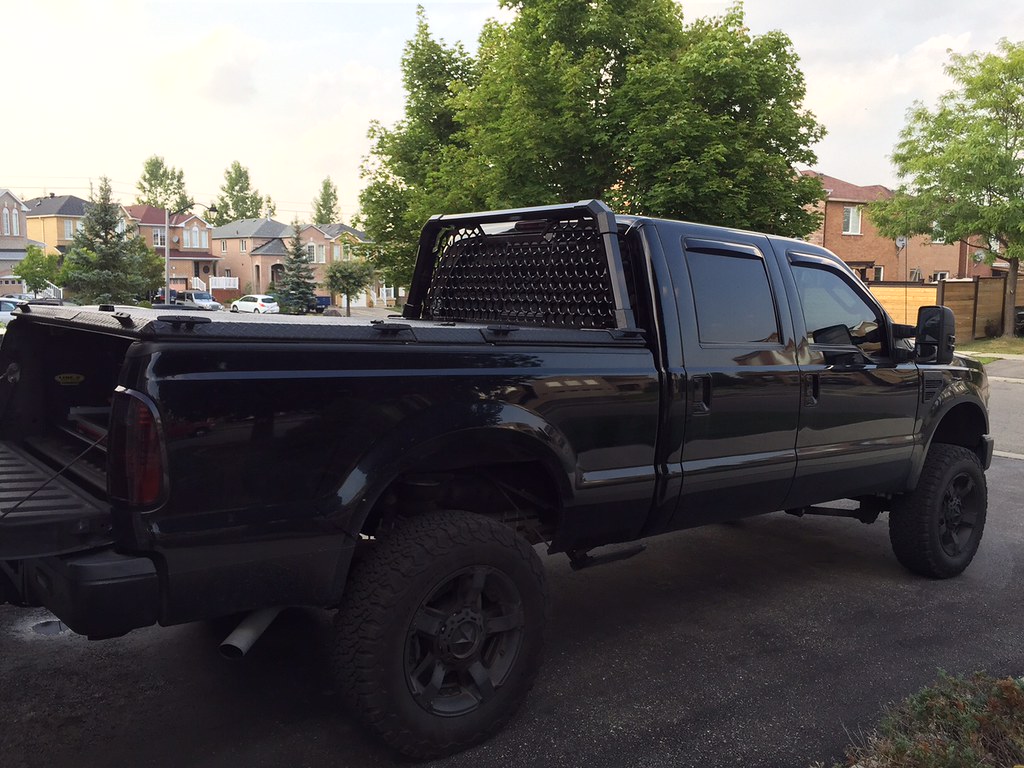
8. **Ford 7.3L Power Stroke V8 (T444E): Old-School Reliability**Before the modern 6.7L Power Stroke, there was a legend that forged Ford’s reputation in the heavy-duty diesel truck market: the 7.3L Power Stroke V8. This iconic engine, fundamentally based on International Navistar’s T444E, is widely regarded as one of the most trusted and enduring diesel engines ever produced. Powering Ford Super Duty trucks from 1994 to 2004, it distinguished itself with its innovative HEUI (Hydraulic Electronic Unit Injector) technology and incredibly robust forged internals, a combination that delivered unbeatable strength and longevity for a generation of truck owners.
The 7.3L Power Stroke is famed for its ability to effortlessly run well beyond 500,000 miles, with many post-1997 models developing an almost fanatical loyal following due to their exceptional reliability. Its all-iron construction contributes significantly to its inherent durability and thermal stability, making it incredibly resistant to the stresses of heavy work. Furthermore, its use of hydraulic lifters contributed to its reputation for being a relatively low-maintenance engine when compared to some of its contemporaries, requiring less frequent valve adjustments than other designs.
While even the most reliable engines have their quirks, the 7.3L Power Stroke’s known issues, such as occasional Crankshaft Position Sensor (CPS) failures or up-pipe leaks, are typically manageable and well-documented within the extensive owner community. Parts availability remains strong, and repairs are generally straightforward for a competent technician, further enhancing its appeal as a long-term investment. This combination of mechanical simplicity, formidable toughness, and predictable maintenance has solidified its place as a diesel icon in the truck world.
For those who appreciate straightforward engineering and uncompromising reliability, the 7.3L Power Stroke remains a gold standard. It’s an engine that proves that brute strength, combined with sensible design choices, can create a powertrain that simply refuses to quit. This ‘old-school’ approach to reliability ensures that these trucks continue to serve faithfully, hauling and towing with a steadfastness that truly defines the spirit of a long-haul diesel.
Car Model Information: 2022 Lincoln Aviator Reserve AWD
Name: Ford Super Duty,(F-250/F-350/F-450/F-550/F-600)
Caption: 2020 Ford F-250
Manufacturer: Ford Motor Company
Production: January 5, 1998–present
ModelYears: 1999–present
Class: pickup truck
Layout: Front-engine, rear-wheel-drive layout
Predecessor: Ford F-Series (ninth generation)
Categories: 2000s cars, 2010s cars, All-wheel-drive vehicles, All articles with bare URLs for citations, Articles with bare URLs for citations from August 2024
Summary: The Ford Super Duty (also known as the Ford F-Series Super Duty) is a series of heavy-duty pickup trucks produced by the Ford Motor Company since the 1999 model year. Slotted above the consumer-oriented Ford F-150, the Super Duty trucks are an expansion of the Ford F-Series range, from F-250 to the F-600. The F-250 through F-450 are offered as pickup trucks, while the F-350 through F-600 are offered as chassis cabs.
Rather than adapting the lighter-duty F-150 truck for heavier use, Super Duty trucks have been designed as a dedicated variant of the Ford F-Series. The heavier-duty chassis components allow for heavier payloads and towing capabilities. With a GVWR over 8,500 lb (3,900 kg), Super Duty pickups are Class 2 and 3 trucks, while chassis-cab trucks are offered in Classes 3, 4, 5, and 6. The model line also offers Ford Power Stroke V8 diesel engines as an option.
Ford also offers a medium-duty version of the F-Series (F-650 and F-750), which is sometimes branded as the Super Duty, but is another chassis variant. The Super Duty pickup truck also served as the basis for the Ford Excursion full-sized SUV.
The Super Duty trucks and chassis-cabs are assembled at the Kentucky Truck Plant in Louisville, Kentucky, and at Ohio Assembly in Avon Lake, Ohio. Prior to 2016, medium-duty trucks were assembled in Mexico under the Blue Diamond Truck joint venture with Navistar International.
Get more information about: Ford Super Duty
Buying a high-performing used car >>>
Brand: Ford Model: Super Duty
Price: $39,000 Mileage: 66,933 mi.

9. **Mercedes OM60x Family: Million-Mile Machines**When discussing sheer longevity and engineering elegance, the Mercedes-Benz OM601, OM602, and OM603 engine family invariably enters the conversation. Spanning production from the early 1980s well into 2000, these engines propelled a range of esteemed Mercedes-Benz models, most famously the W124 chassis, and were available in dependable inline-four, -five, and -six cylinder configurations. They cemented Mercedes-Benz’s reputation for building vehicles that could quite literally last forever, embodying a commitment to over-engineering.
These OM60x engines are celebrated globally for their remarkably smooth operation and an almost unbelievable capacity for high mileage. It is not just a marketing claim; countless units have demonstrably surpassed the one-million-mile mark, a testament to their meticulous design and construction. The modular architecture of this engine family, a thoughtful design choice, often simplified maintenance tasks for mechanics, further contributing to their long-term viability and popularity among discerning owners.
While largely bulletproof, early iterations of the OM603 inline-six did present some specific challenges, primarily related to cracked cylinder heads and instances of bent connecting rods. However, these issues were addressed, and the overwhelming majority of the OM60x family engines remain highly regarded for their fundamentally indestructible architecture and their minimal, predictable maintenance needs. They are frequently observed in enthusiast-owned W124s and other classic Mercedes sedans, still running decades after rolling off the assembly line, proving their enduring quality.
These engines represent a pinnacle of diesel engineering where longevity was paramount. Their robust construction, combined with proper care and attention to routine service, ensures that they continue to deliver reliable performance for generations. The OM60x family truly lives up to its moniker as ‘Million-Mile Machines,’ offering a unique blend of German precision, luxury, and unparalleled durability that continues to captivate automotive aficionados.
Car Model Information: 2022 Buick Envision FWD Preferred
1: Mercedes-Benz OM603 engine
2: Mercedes-Benz OM606 engine
3: Mercedes-Benz M119 engine
4: Mercedes-Benz M104 engine
5: Mercedes-Benz M104 engine
6: Mercedes-Benz M104 engine
7: Mercedes-Benz M104 engine
Name: Mercedes-Benz W124
Manufacturer: Daimler-Benz
Production: ubl
Predecessor: Mercedes-Benz W123
Successor: ubl
Class: Executive car
Layout: Front-engine, rear-wheel-drive layout,rear-wheel drive
BodyStyle: ubl
Related: Mercedes-Benz E-Class,Ssangyong Chairman
Assembly: ubl
Wheelbase: ubl
Abbr: on
Length: ubl
Width: ubl
Weight: ubl
Height: ubl
Engine: Petrol engine
Framestyle: border:none; padding:0;
Title: Straight-six engine
Transmission: ubl
Designer: ubl
Categories: 1990s cars, All-wheel-drive vehicles, All articles needing additional references, All articles with unsourced statements, Articles needing additional references from September 2025
Summary: The Mercedes-Benz W124 is a range of executive cars made by Daimler-Benz from 1984 to 1997. The range included numerous body configurations, and though collectively referred to as the W-124, official internal chassis designations varied by body style: saloon (W 124); estate (S 124); coupé (C 124); cabriolet (A 124); limousine (V 124); rolling chassis (F 124); and long-wheelbase rolling chassis (VF 124).
From 1993, the 124 series was officially marketed as the E-Class. The W 124 followed the 123 series from 1984 and was succeeded by the W 210 E-Class (saloons, estates, rolling chassis) after 1995, and the C 208 CLK-Class (coupés, and cabriolets) in 1997.
In North America, the W124 was launched in early November 1985 as a 1986 model and marketed through the 1995 model year. Series production began at the beginning of November 1984, with press presentation on Monday, 26 November 1984 in Seville, Spain, and customer deliveries and European market launch starting in January 1985.
Get more information about: Mercedes-Benz W124
Buying a high-performing used car >>>
Brand: Mercedes-Benz Model: W124 chassis
Price: $19,985 Mileage: 59,144 mi.
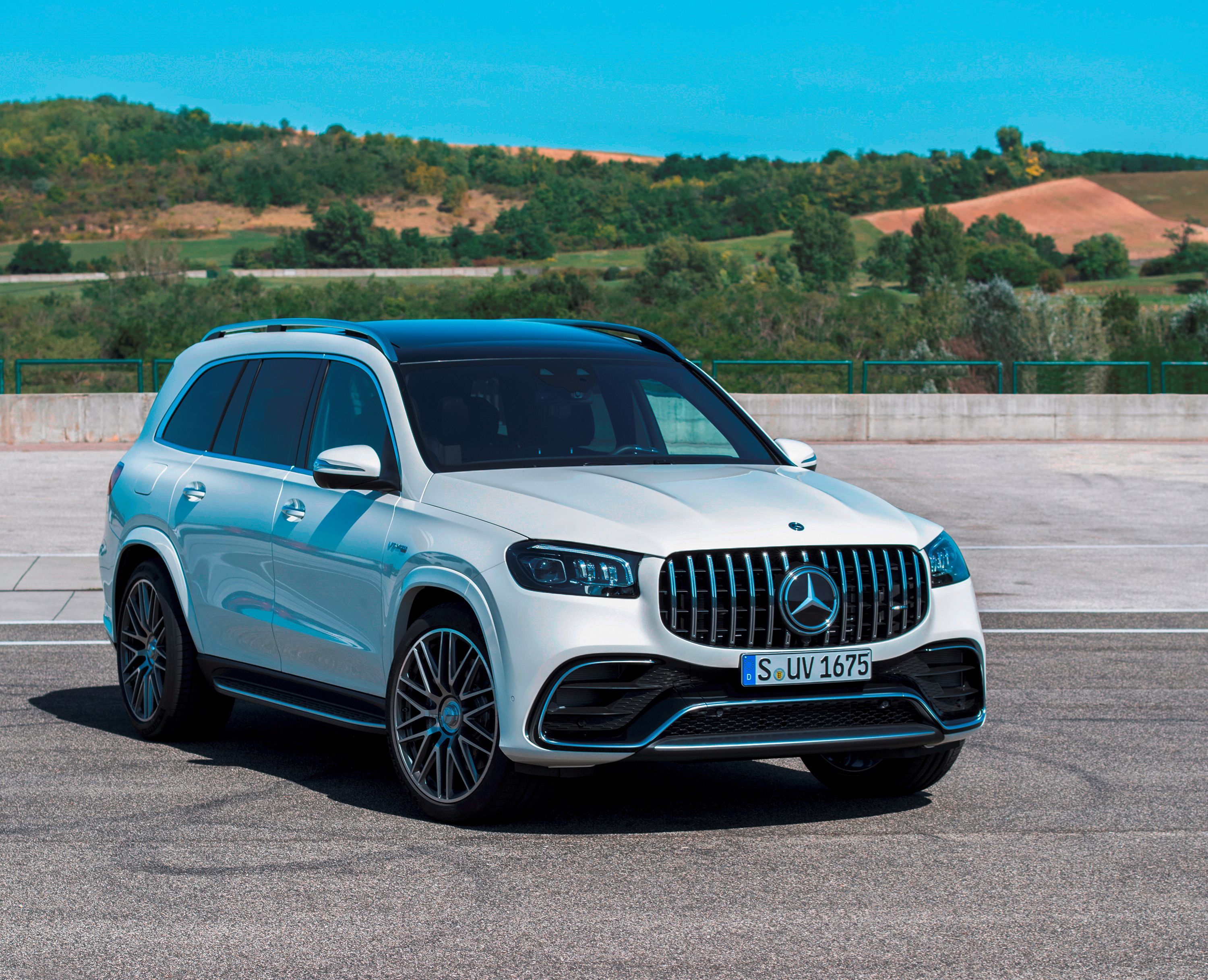
10. **Mercedes OM616/OM617: Diesel’s Gold Standard**Stepping further back in time, we arrive at what many automotive purists and diesel enthusiasts consider the ultimate benchmark for reliability: the Mercedes-Benz OM616 and OM617 engines. These legendary powerplants powered a host of W123 and W116 Mercedes-Benz models throughout the 1970s and 1980s, becoming synonymous with indestructible quality. Designed by the visionary Ferdinand Piëch, these naturally aspirated and turbocharged engines were engineered for a singular purpose: to last.
Their reputation for longevity is staggering, with numerous examples documented to have effortlessly reached over one million miles. Perhaps the most celebrated feat is that of some taxi fleets, with individual vehicles reportedly exceeding an astounding 4.3 million miles on their original OM617 engines. While they produced modest horsepower figures, their design prioritized uncompromising durability and remarkable ease of maintenance, a philosophy that has undeniably paid dividends over the decades.
The secret to their extraordinary lifespan lies in their straightforward, over-engineered design. These engines benefit from a lack of complex electronics, relying instead on robust mechanical systems. Consistent, basic maintenance — including regular oil changes, diligent valve adjustments, and meticulous fuel system upkeep — is often all that is required to keep these engines running virtually indefinitely. This low-tech, high-durability approach is precisely why they are revered as ‘Diesel’s Gold Standard.’
Even though these engines are now considered antiques, their fundamental simplicity, almost absurd level of over-engineering, and the continued availability of replacement parts ensure that they remain on the road and cherished by a dedicated global following. The OM616 and OM617 are not just engines; they are rolling monuments to an era of automotive engineering where dependability and longevity were the ultimate measures of success, proving that sometimes, the simplest and strongest designs are indeed the best for the long haul.
**The Enduring Blueprint: Why Diesel Engines Go the Distance**
Beyond these individual titans, there’s a fundamental engineering philosophy that underpins the extraordinary longevity of diesel engines. It’s not simply a matter of luck or anecdotal evidence; there are concrete design principles and operational characteristics that give diesels an inherent advantage when it comes to lasting for hundreds of thousands, and often over a million, miles. Understanding these foundational aspects helps demystify why these workhorses consistently outlast their gasoline counterparts, becoming legendary long-haul companions.
One of the biggest reasons diesel engines are so durable lies in their very construction. They are, quite simply, built stronger. Diesel engines operate with significantly higher compression ratios than gasoline engines, which necessitates a more robust engine block and heavier-duty internal components. We’re talking about reinforced pistons, thicker cylinder walls, stronger connecting rods, and beefier crankshafts – all designed to withstand immense pressures and stresses that would quickly overwhelm a gasoline engine. This sheer physical strength forms the bedrock of their legendary endurance, allowing them to handle heavy loads and continuous operation without premature wear and tear.
Furthermore, diesel engines generally operate at lower RPMs compared to gasoline engines. While a petrol engine might be screaming at 4,000-6,500 RPM for peak power, a diesel engine typically delivers its immense torque in the much lower range of 1,500-3,500 RPM. This lower rotational speed means less mechanical stress on moving parts and reduced heat buildup over time, directly translating into less wear and a longer operational lifespan. The slower, more deliberate cycles inherently preserve the engine’s internal components, allowing them to endure many more hours of operation.
Another significant, yet often overlooked, factor is the lubricating properties of diesel fuel itself. Unlike gasoline, diesel fuel possesses a higher viscosity and an inherently oilier consistency, providing a natural lubricating effect within the fuel system. This internal lubrication helps reduce friction and wear on critical components like fuel injectors and pump elements, further contributing to their extended life. This isn’t just about external oil; it’s an intrinsic benefit that helps protect the engine from the inside out, reducing internal friction on piston rings and cylinder walls over time.
Diesel engines also benefit from a more efficient combustion process, burning leaner and cooler than gasoline engines. This characteristic results in less heat stress on components and significantly fewer carbon deposits, which can be a major cause of wear and performance degradation in gasoline engines. Additionally, the simpler ignition system of a diesel engine – relying on compression ignition rather than spark plugs and ignition coils – means fewer sensitive and expendable components that can fail, further enhancing their reliability and reducing maintenance complexity in this specific area.
Finally, the fundamental design philosophy of diesel engines centers around heavy-duty applications. They are engineered from the ground up for trucks, buses, construction equipment, and other demanding roles where prioritizing durability, strength, and longevity over peak performance figures is paramount. This purpose-built design, incorporating features like larger bearing sizes, higher oil capacities with beefier pumps, and in many heavy-duty diesels, gear-driven components that eliminate timing belts or chains, all contribute to their ability to endure more beating, tow more, and carry more, consistently thriving under stress and strain.
**Mastering Longevity: The Pillars of Diesel Maintenance**
While inherent design advantages are crucial, even the most robust diesel engine won’t reach its full potential without dedicated, meticulous maintenance. Reaching and surpassing the 400,000-mile mark, or even approaching a million miles, is a direct reflection of proactive care and adherence to best practices. It’s a partnership between exceptional engineering and diligent ownership, where every fluid change and inspection plays a vital role in extending the engine’s lifeblood.
Regular oil changes and comprehensive fluid maintenance are paramount. Engine oil is undeniably the lifeblood of a diesel engine, and using high-quality, manufacturer-recommended diesel oil changed at prescribed intervals is non-negotiable. Diesel engines, by their nature, produce more soot and can run hotter in certain situations, making clean oil critical for managing friction, preventing overheating, and mitigating premature wear. Beyond oil, other vital fluids like coolant, transmission fluid, and differential oil must also be regularly inspected and replaced as part of a robust long-term maintenance plan, ensuring every system operates at peak efficiency.
Fuel system care and injector maintenance are equally critical. Diesel engines rely on incredibly precise fuel injection systems, and over time, injectors can become clogged or develop leaks, leading to poor fuel combustion, reduced efficiency, and potential engine damage. Regularly cleaning or replacing injectors as needed, and consistently using high-quality diesel fuel, often with appropriate additives, can significantly prevent these issues, safeguarding the heart of the engine’s power delivery. Maintaining a clean fuel system is key to consistent performance and longevity.
Proper cooling system function is another non-negotiable aspect of diesel engine longevity. Overheating is one of the quickest routes to catastrophic internal engine damage, degrading and warping essential components. A meticulously maintained cooling system – encompassing the radiator, water pump, thermostat, and crucially, optimal coolant levels and quality – is absolutely essential to prevent excess heat from compromising the engine’s structural integrity. Regular checks ensure efficient thermal management, protecting your investment from a premature demise.
Driving habits also profoundly influence engine lifespan. While diesel engines are built for endurance and heavy-duty work, avoiding excessive idling and aggressive driving is beneficial. Prolonged idling can lead to carbon buildup within the engine and emissions systems, while hard acceleration, high-speed towing, and excessive braking place unnecessary stress on internal components. Ironically, long highway drives, where the engine operates at steady RPMs and stable temperatures, are ideal for diesel engines, promoting proper lubrication and efficient heat dissipation, thereby minimizing wear and tear.
Finally, timely replacements and repairs are essential. Even the most perfectly maintained diesel engine will require component replacements over its extended lifespan. Items like timing belts (where applicable), water pumps, alternators, and glow plugs all have finite wear limits. Staying ahead of preventative maintenance schedules for these components is absolutely critical to avoid catastrophic failures and significantly more costly repairs down the line. A proactive approach to addressing small issues early can prevent them from escalating into major engine damage, maximizing the engine’s operational years.
**The Long-Haul Value Proposition: Investing in Diesel Endurance**
The legendary longevity of diesel engines is far from a myth; it’s a deeply ingrained reality born from superior engineering and, crucially, diligent stewardship. From the robust, purpose-built internal components to their inherently lower operating RPMs and the lubricating properties of their fuel, every aspect of a diesel engine’s design points towards an unwavering commitment to endurance. This meticulous attention to durability transforms them from mere powerplants into true long-haul investments, especially for those who demand uncompromising reliability and performance over vast distances or in heavy-duty applications.
The engines highlighted in this comprehensive article – from the European stalwarts like the Mercedes OM617 to the American workhorses like the Cummins ISB and Ford Power Stroke – represent the pinnacle of this design philosophy. They are not just engines; they are the heartbeats of countless commercial fleets, expedition vehicles, and dedicated personal trucks, consistently defying conventional mileage expectations and redefining what’s possible in automotive longevity. Their ability to surpass the 400,000-mile mark, and in many cases, far beyond, is a testament to their enduring quality and the value they bring to their owners.
For those contemplating the purchase of a diesel vehicle or looking to maximize the life of their current one, the message is clear: the initial investment in a well-engineered diesel, coupled with a unwavering commitment to professional, scheduled maintenance, yields substantial returns in terms of reliability, operational efficiency, and extended service life. It’s about recognizing that preventive care is not an expense, but an essential investment that ensures your diesel engine remains a faithful, powerful companion on the road for hundreds of thousands, potentially even millions, of miles to come. These engines are truly built for the long haul, ready to tackle any journey with unwavering determination.

